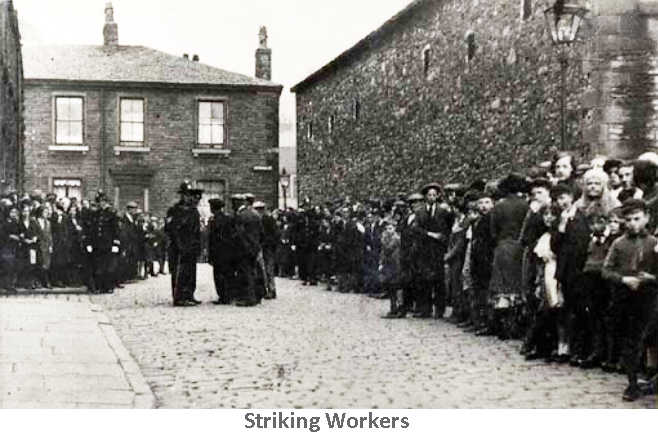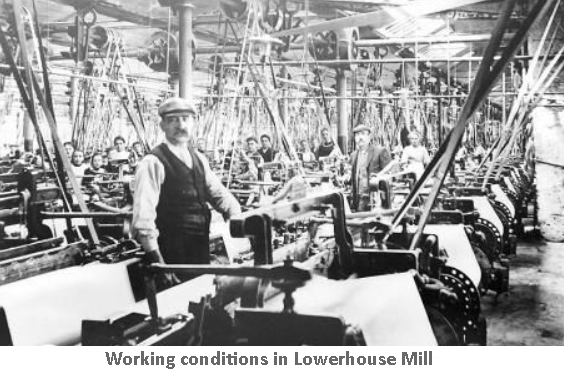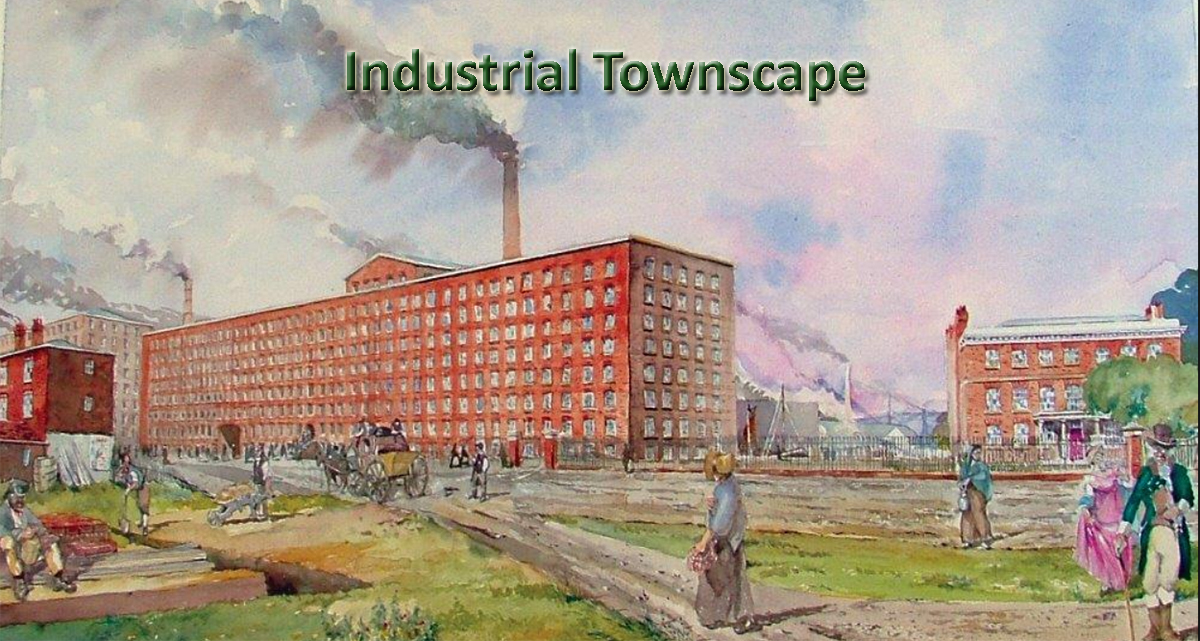 Lowerhouse Mile - Townscape
Lowerhouse Mile - Townscape 
(Page 3 of 4)
Lowerhouse - Industrial Townscape
Weavers and Spinners Strike
In April 1878, the weavers and spinners of North East Lancashire went on strike, having rejected their employers’ (“Masters”) decision to cut their pay rate by 10%,
in response to difficult trading conditions. Not all mills in Burnley were affected, but most were. One exception was Dugdale’s Lowerhouse Mill, where the weavers had
accepted the 10% reduction and carried on full time working, despite Lowerhouse being known as a hot bed of radical politics. However, hardly anyone locally was unaffected,
directly or indirectly, by the mills being closed, such was the scale of employment in the industry.
Although only the weavers were actually on strike, if they didn’t work, then ancillary trades in the mills also couldn’t work. The Weavers Union relieved their members and other weavers, with a small weekly sum, but those made involuntarily unemployed by the strike had to turn to the Burnley Board of Guardians for relief. Men had to declare their willingness to work, and no other work being available, they were to be employed breaking stones in return for relief.

The two sides remained bitterly divided, and in May, the strike became a lock-out. By mid-May the situation was deteriorating rapidly, with outbreaks of rioting and damage to property and soldiers were sent to Lancashire to keep order. The Burnley Advertiser of 25th May 1878 reports that there were quartered in Burnley, 300 foot soldiers, 80 Lancers, 100 policemen and 150 special constables. The Lancers rode through Lowerhouse, but found all quiet.
In Padiham, the introduction of the Militia provoked fury and turned what was basically a good humoured crowd into an angry one. After Major Starkie read the Riot Act from the Starkie’s Arms, the windows of the pub were smashed. Other towns were more seriously affected by riots than Burnley where disturbances were relatively low key. Eventually, after 9 weeks, around 20th June, defeated, and after much hardship, with Union funds nearly exhausted, “the majority of the operatives feeling that further resistance was useless decided to submit for the present” and returned to work, accepting the employers’ terms and “the greatest strike ever known in Lancashire” came to an end.

However, every cloud has a silver lining, at least according to the Burnley Express, who reported that the death rate in many parts of East Lancashire had gone down, because, they suggested being on strike, meant that workers had been forced into “plainer living”, had more opportunities for a “breath of fresh air”, away from “the stifling atmosphere” in mills and sheds and “ infants too, sorely neglected when their parents were at the factory, had the advantage of the mother’s attention and nursing”.
To cap it all, the winter of 1878/9 was one of the worst ever experienced, with snow and freezing temperatures for weeks on end. By the end of the year, the distress caused by the cold weather meant that more relief was being given by the Burnley Guardians than they gave during the strike.
(The above brief account, was culled from the British Newspaper Archive.)



